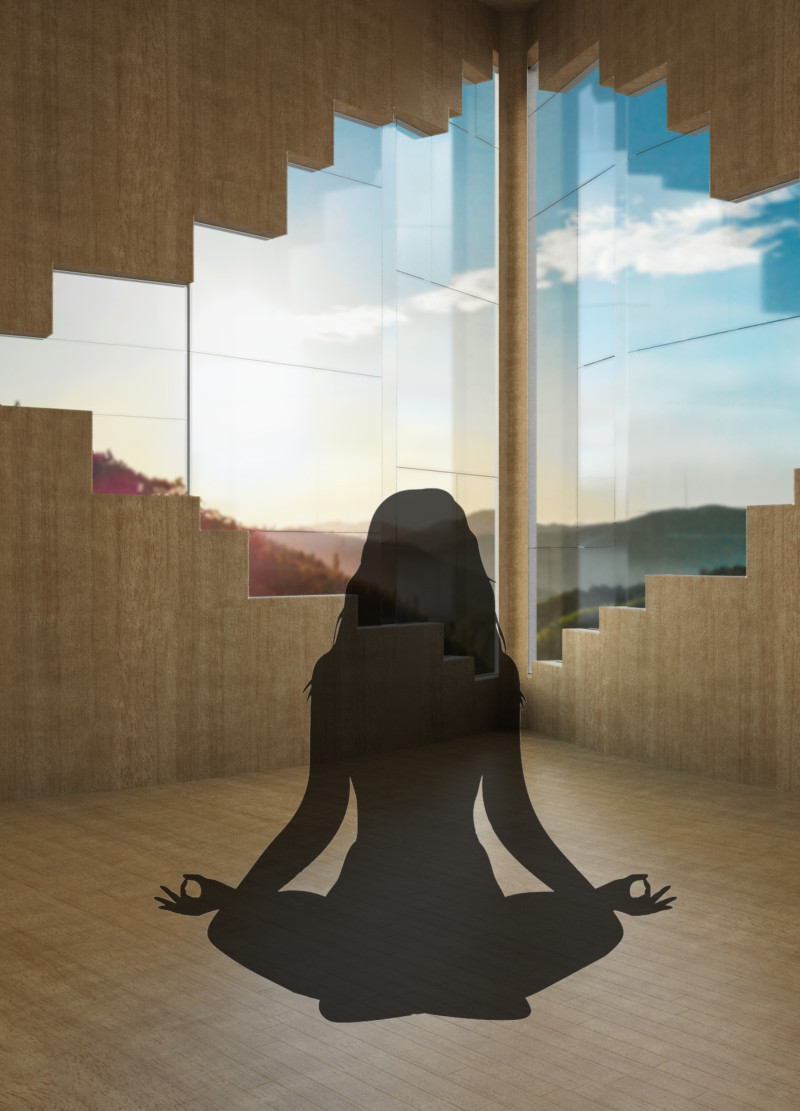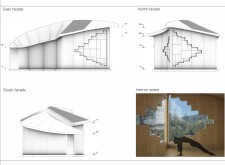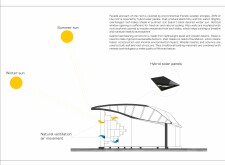5 key facts about this project
At the core of the design philosophy lies a commitment to harmonizing with the site's natural features. The elongated structure of the Cabine is carefully positioned to respond to the landscape's contours, creating a dialogue between the built form and the environment. This architectural approach not only emphasizes the importance of context in design but also enhances the overall aesthetic quality of the project. The building's facades are creatively articulated with angular lines and breaks that mimic the terrain, allowing the structure to blend seamlessly with its surroundings while maintaining its unique identity.
The functionality of the Cabine is central to its design. The interior is organized to facilitate a fluid transition through various spaces, encouraging a journey that culminates in an expansive area dedicated to meditation. This layout is intentional, guiding individuals from more enclosed, introspective spaces to open areas that draw in magnificent views of the surrounding landscape. Various proportions and configurations of windows are strategically employed to modulate natural light throughout the day, creating diverse atmospheres that enrich the user experience.
Materiality plays a significant role in the project, reflecting a commitment to sustainability and environmental consciousness. Key materials include wooden shingles that cover parts of the roof, wooden beams and columns that form the structural framework, as well as rockwool insulation that enhances acoustic and thermal performance. The interior spaces are finished with wooden veneer panels, promoting a warm and inviting atmosphere conducive to relaxation and introspection. Furthermore, the integration of hybrid solar panels on the roof underscores the project's sustainable ethos, providing energy while supporting the building's overall functionality without compromising its design integrity.
Unique design approaches within the Cabine's architecture further enhance its intent as a space for contemplation. The exterior form features a pronounced roof overhang, which serves dual purposes: shading the interiors during warmer months while allowing sunlight to warm the space in winter. This climate-responsive design ensures comfort throughout the year and enhances the users' connection to the cycles of nature. The facade’s angular design not only captures the play of light and shadow but also lends a dynamic quality to the building, ensuring that it evolves in appearance from different perspectives.
Through these design decisions, the Cabine of Introspection stands as a compelling example of architectural practice that prioritizes the relationship between inhabitants and their environment. By employing thoughtful strategies to marry form and function, this project successfully carves out a space that promotes mindfulness and personal reflection. For those interested in exploring architectural designs that prioritize sustainability and user experience, a closer look at the architectural plans and sections of this project will provide deeper insights into its design principles and innovative ideas. Engaging with the specifics of the Cabine’s design will enrich your understanding of contemporary architectural practices at the intersection of nature and built environments.


























